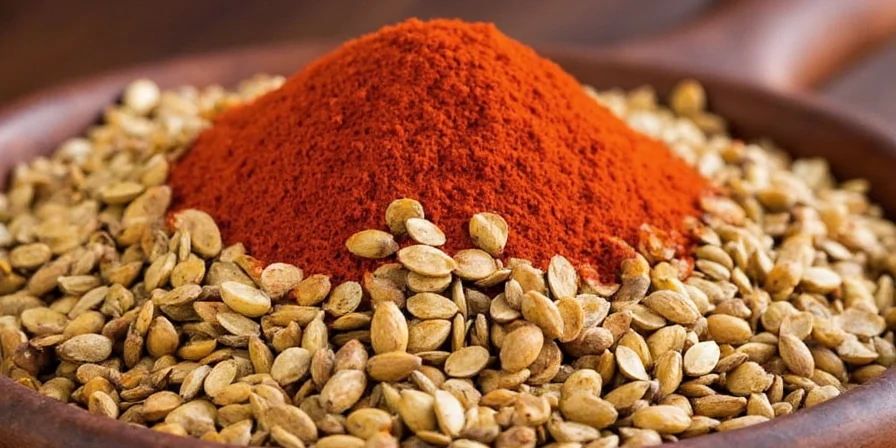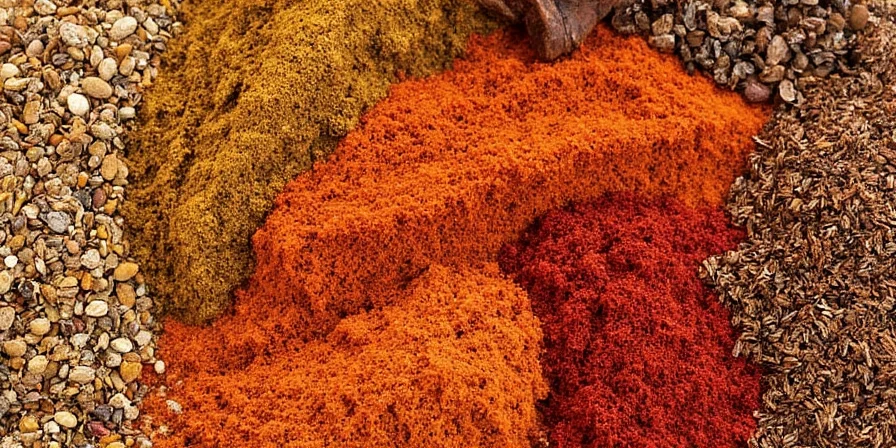Spice Safari: 7 Must-Know African Spice Secrets That Will Transform Your Kitchen!
If you've ever wondered why your homemade tagine doesn't quite taste like the one you had on a dusty street corner in Marrakech, or why your jollof rice always seems to be missing that 'je ne sais quoi,' you're not alone. The answer might just lie in the spice drawer — or more specifically, in Africa’s rich and diverse spice traditions.
In this blog post, we’ll take you on a flavorful journey across the African continent — from the bustling souks of Morocco to the fiery kitchens of Nigeria and beyond — uncovering the secrets behind some of the world's most vibrant and underappreciated food cultures. Whether you're a seasoned spice hunter or a curious kitchen adventurer, there’s something here for everyone.
Table of Contents
- African Spice Traditions: A Historical Overview
- Top 7 African Spices Every Kitchen Should Have
- Regional Spice Blends & Their Stories
- How to Use African Spices Like a Pro
- Spice Tips & Tricks: From Storage to Substitution
- The Future of African Food Culture on the Global Stage
🌍 African Spice Traditions: A Historical Overview
Africa’s spice history is as ancient as it is complex. While Europe was busy battling over black pepper routes, Africans were cultivating and trading their own unique spices long before colonial powers even knew what berbere was. Let’s rewind a bit and explore how these spices became deeply embedded in African cuisine and culture.
The trans-Saharan trade routes brought spices like alligator pepper (grains of paradise), ginger, and dried chilies into West African kingdoms like Mali and Ghana. These weren’t just flavorings — they were symbols of status, health, and spirituality.
| Region | Key Spices Used Historically | Cultural Significance |
|---|---|---|
| West Africa | Alligator pepper, chili, ginger | Ritual offerings, medicinal uses, everyday cooking |
| East Africa | Cumin, coriander, turmeric | Brought via Arab traders; used in biryanis and stews |
| North Africa | Cumin, cinnamon, paprika | Fundamental to tagines, couscous, and preserved meats |
Fun Fact:
Did you know that the word “pepper” comes from the Sanskrit word *pippali*? But in parts of West Africa, locals refer to alligator pepper as “guinea grains” — a testament to how indigenous spice vocabularies evolved separately from European ones.
🌶️ Top 7 African Spices Every Kitchen Should Have
If you’re ready to level up your culinary game, here are the seven essential African spices that should be in every adventurous cook’s pantry. Some may be familiar, others might surprise you — but all will bring depth and authenticity to your dishes.
- Berbere (Ethiopia) – A fiery blend with chili, garlic, ginger, and fenugreek. Great for slow-cooked stews called doro wat.
- Grains of Paradise (West Africa) – Often mistaken for black pepper, this seed has a citrusy kick and earthy warmth. Perfect for marinades and soups.
- Suya Spice (Nigeria) – A bold mix of groundnut (peanut) powder, chili, ginger, and salt used to season skewered meat.
- Kaloum Blend (Senegal) – Smoky and herbal, often includes thyme, dried fish powder, and chili. Ideal for seafood and grilled chicken.
- Cumin (North Africa) – The backbone of many Moroccan dishes. Toast it lightly to unlock its nutty aroma.
- Moringa Powder (East Africa) – Technically a leaf, but used like a spice. Packed with nutrients and adds a peppery bite.
- Dawadawa (Ghana/Nigeria) – Fermented locust bean paste with a strong umami flavor. Use sparingly in soups and sauces.

Pro Tip:
When buying whole spices like cumin seeds or grains of paradise, grind them fresh using a mortar and pestle or a dedicated spice grinder. Freshness makes all the difference!
📜 Regional Spice Blends & Their Stories
Each region in Africa has its own signature spice blends — some passed down through generations, others adapted from neighboring cultures. Here’s a quick look at some iconic regional spice mixes and where they come from:
| Name | Origin | Main Ingredients | Common Uses |
|---|---|---|---|
| Za'atar | Egypt/Sudan | Thyme, sumac, sesame seeds | Flatbreads, dips, seasoning for vegetables |
| Ras el Hanout | Morocco | Over 30 spices including cardamom, clove, cinnamon | Lamb tagines, couscous, roasted meats |
| Peri Peri | Angola/Mozambique | Bird’s eye chili, lemon, garlic | Marinades for chicken and seafood |
Spice Spotlight: Ras el Hanout
This Moroccan spice blend literally means “top of the shop.” It was traditionally made by spice vendors using only the highest quality ingredients. Today, each family or vendor might have their own closely guarded version.
🍳 How to Use African Spices Like a Pro
Now that you’ve got your spice stash, let’s talk technique. Using African spices isn’t just about throwing them into a pot — timing, heat, and layering flavors matter. Here’s how to get it right:
- Toasting First: Heat spices gently in a dry pan before adding them to oil. This releases their oils and enhances flavor.
- Layering Flavors: Start with aromatics (onions, garlic), add spices early in the cooking process, then build layers with herbs and liquids.
- Dry Rubs vs. Wet Pastes: Dry rubs work well for grilled meats (like suya), while wet pastes (like berbere + oil) create deeper flavor in stews.
- Add Toward End: Delicate spices like moringa powder or za’atar are best sprinkled on top at the end to preserve freshness.

💡 Spice Tips & Tricks: From Storage to Substitution
Want your spices to last longer and pack more punch? Here’s a few pro tips and hacks that’ll keep your spice cabinet performing at its peak.
| Tip | Description |
|---|---|
| Store in Glass Jars | Dark-colored glass protects against light degradation. Keep away from heat sources like the stove. |
| Freeze Whole Spices | Whole spices like cumin seeds can be frozen to extend shelf life without losing potency. |
| Label Everything | You’ll thank yourself later when you can instantly tell which jar is kaloum blend and which is suya spice. |
| Substitute Smartly | No berbere? Try a mix of paprika, chili powder, garlic powder, and a pinch of fenugreek. |
Quick Hack:
Make a “starter blend” of commonly used spices like cumin, coriander, smoked paprika, and a touch of chili. Use it as a base for soups, stews, or roasted veggies.
🚀 The Future of African Food Culture on the Global Stage
As the global palate becomes more adventurous and inclusive, African cuisines — and their complex spice profiles — are finally getting the recognition they deserve. From Michelin-starred restaurants serving modern interpretations of traditional dishes to food bloggers championing local ingredients, the tide is turning.
But beyond trendiness, there’s real power in reclaiming and celebrating these flavors. By understanding the role spices play in African identity, community, and storytelling, we do more than just cook — we connect.
Final Thought:
So next time you reach for that bag of cumin or jar of chili flakes, think beyond the label. Think of the markets in Zanzibar, the nomadic tribes of Mali, the coastal fishermen of Senegal. Each spice has a story — and now, so do you.
🔚 Conclusion
From the deep roots of historical trade to the vibrant spice blends defining today’s African kitchens, spices are more than just flavor — they’re cultural DNA. Whether you're experimenting with berbere or grinding your own suya spice at home, every pinch brings you closer to the heart of Africa’s incredible food culture.
So spice up your life — and your recipes — with a little African flair. You won’t regret it!











 浙公网安备
33010002000092号
浙公网安备
33010002000092号 浙B2-20120091-4
浙B2-20120091-4